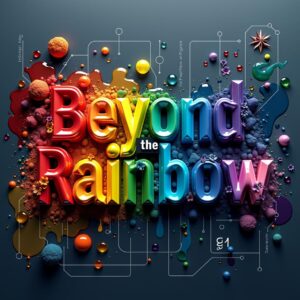
Colour is more than just a visual experience—it’s a powerful tool that evokes emotions, influences decisions, and shapes perceptions. While rainbows display nature’s spectrum, mastering colour combinations is an art and science that designers, artists, and marketers leverage to create harmony, contrast, and impact.
In this article, we’ll explore:
- The psychology of colour combinations
- Key principles of colour harmony
- How different industries use palettes effectively
- Tools & techniques for choosing the perfect palette
1. The Psychology of Colour Combinations
Why do some colours feel “right” together while others clash? The answer lies in both biology and culture:
- Warm vs. Cool Tones – Reds, oranges, and yellows energize, while blues and greens soothe.
- Cultural Associations – In the West, white symbolizes purity, while in some Eastern cultures, it represents mourning.
- Emotional Triggers – Complementary colours (like blue & orange) create vibrancy, while analogous colours (like blue & purple) offer serenity.
Understanding these nuances helps in crafting palettes that resonate with the intended audience.
2. Principles of Colour Harmony
Great colour schemes follow key theories:
A. The Colour Wheel & Classic Harmonies
- Complementary – Opposite colours (e.g., red & green) for bold contrast.
- Analogous – Adjacent hues (e.g., blue, teal, green) for smooth transitions.
- Triadic – Three evenly spaced colours (e.g., purple, orange, green) for balance.
- Monochromatic – Different shades of a single hue for sophistication.
B. The 60-30-10 Rule (Design Secret!)
A foolproof formula for balanced palettes:
- 60% Dominant Colour (background/base)
- 30% Secondary Colour (supporting elements)
- 10% Accent Colour (highlights & pops)
3. How Industries Use Colour Strategically
- Branding – Coca-Cola’s red exudes energy; Tiffany’s blue signals luxury.
- Interior Design – Neutral walls with bold accents create focal points.
- Fashion – Seasonal palettes (pastels in spring, jewel tones in winter) dictate trends.
- Digital Design – High-contrast palettes improve readability (e.g., dark mode).
4. Tools & Techniques for Perfect Palettes
- Adobe Colour – Generates harmonies from images or colour wheel selections.
- Coolors.co – Instantly creates and refines palettes.
- Nature as Inspiration – Sunsets, oceans, and forests offer organic combinations.
The Art & Science of Colour
Colour is a universal language, and mastering its combinations unlocks endless creative possibilities. Whether you’re designing a logo, painting a masterpiece, or decorating a room, the right palette can transform the ordinary into the extraordinary.